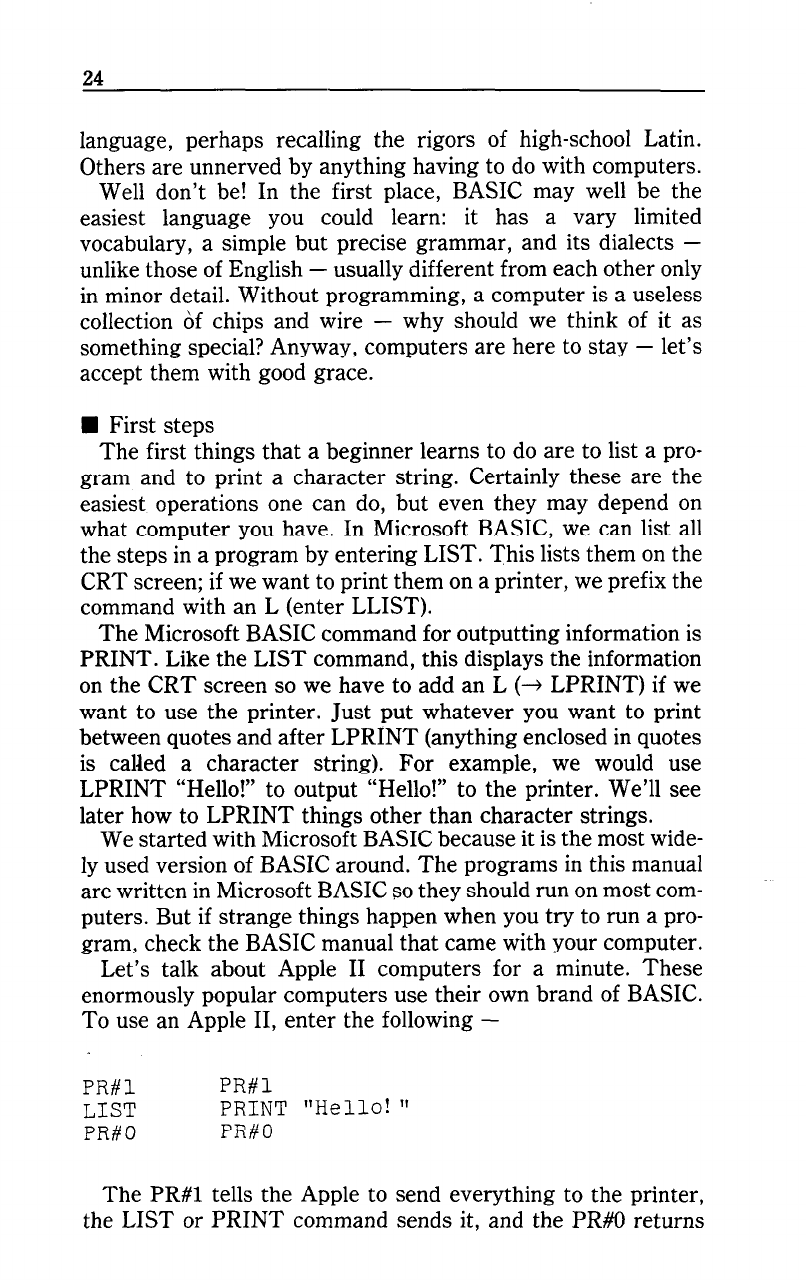
;
24
language, perhaps recalling the rigors of high-school Latin.
Others are unnerved by anything having to do with computers.
Well don’t be! In the first place, BASIC may well be the
easiest language you could learn: it has a vary limited
vocabulary, a simple but precise grammar, and its dialects -
unlike those of English - usually different from each other only
in minor detail. Without programming, a computer is a useless
collection of chips and wire - why should we think of it as
something special? Anyway, computers are here to stay - let’s
accept them with good grace.
n First steps
The first things that a beginner learns to do are to list a pro-
gram and to print a character string. Certainly these are the
easiest operations one can do, but even they may depend on
what computer you have. In Microsoft BASIC, we can list all
the steps in a program by entering LIST. This lists them on the
CRT screen; if we want to print them on a printer, we prefix the
command with an L (enter LLIST).
The Microsoft BASIC command for outputting information is
PRINT. Like the LIST command, this displays the information
on the CRT screen so we have to add an L (+ LPRINT) if we
want to use the printer. Just put whatever you want to print
between quotes and after LPRINT (anything enclosed in quotes
is called a character string). For example, we would use
LPRINT “Hello!” to output “Hello!” to the printer. We’ll see
later how to LPRINT things other than character strings.
We started with Microsoft BASIC because it is the most wide-
ly used version of BASIC around. The programs in this manual
are written in Microsoft BASIC so they should run on most com-
puters. But if strange things happen when you try to run a pro-
gram, check the BASIC manual that came with your computer.
Let’s talk about Apple II computers for a minute. These
enormously popular computers use their own brand of BASIC.
To use an Apple II, enter the following -
PR#l
PR#l
LIST
PRINT "Hello! It
PR#O
PR#O
. . .,I
-
-
The PR#l tells the Apple to send everything to the printer,
the LIST or PRINT command sends it, and the PR#O returns


















